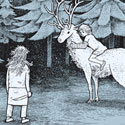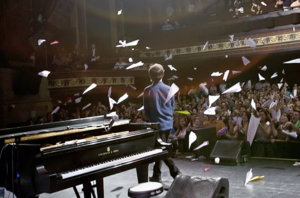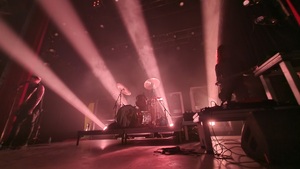
Hans Christian Andersen: Fairy Tales
Translated by Tiina Nunnally and Edited by Jackie Wullschlager
Penguin Group
The fairy tales of Hans Christian Andersen should be banned. Then more kids would read them, sneak around their parents, hide underneath the covers with flashlight in hand and see how freakin’ cool they really are, before Walt Disney movies went and mucked ‘em up and slapped a “G” rating on watered down versions void of Andersen’s original humor and brilliantly twisted but revolutionary storytelling ways. His tales are as much for children as the dual-targeted Family Guy, South Park, The Simpsons and the Cartoon Network’s lineup, but nonetheless necessary for all audiences. Originally released in the UK last year on the 200th anniversary of his birth, this stateside 2006 release and recently updated version claims to shed light on Andersen’s gifts and timelessness as a writer.
Andersen wrote many fairy tales, which made earlier collections thicker than a library reference book, so the focus with this sleeker collection is on the “three broad phases of his work…early folklore; classical middle years and the late revolutionary experiments which relate closest to today’s concerns.” It’s also noted– and this might be strange to most of us who live in an oral storytelling void– that Andersen wrote most of his stories to be told out loud, continuing the practice of how he came to know the art of storytelling from his grandmother, who helped raised him.
This focused editorial vision is a good thing because other versions are so expansive and intimidating to get into, but this 400-page portable Penguin Classic– complete with the usual timeline and noted sources– contains just enough of Andersen. Insightful illustrations of paper cutouts– which he did early on while he felt his way through artistic development– precede each story, showing another dimension of his artistic abilities. Notes on the illustrations say he used these as starting points for many of his stories.
With several of his stories having been made into child and family-friendly Disney films I’ll pick one most of us are familiar with– “The Little Mermaid”– as an example of why his stories should be reread today so you can enjoy the real original version and compare and maybe even like better.
“The Little Mermaid” stands out as one of the best, and there are many others, as far as comparing goes. Growing up I saw the Disney film numerous times. I remember Ariel, Sebastian the crab and the big Broadway showtune numbers like “Under the Sea” and “Kiss the Girl” that I can still blissfully recall at a moment’s notice. Aside from the touches of lovesick fairytale, none of that is in this version. And when I read Andersen’s original I saw something provocatively different, making me wish Andersen’s version would’ve made it onto the screen, which of course would have probably been given a PG-13 or maybe even an R rating. There’s not enough space here to explain but Andersen’s version blows the Disney version out of the water including the ending which causes a thought provoking “wait… what-just-happened-here?” rereading– exactly what Andersen had intended in the first place.
To give you a little author backstory, Andersen didn’t have a very happy or normal childhood– mirroring, when I think about it, a contemporary artist named Marshall Mathers (aka Eminem). Though separated by two-hundred years, the two shared a similar nomadic upbringing and destiny-driven career timeline that forever changed their lives and ultimately the medium in which they each flourished.
Translator Tiina Nunnally and editor Jackie Wullschlager asked the obvious question of, “why does the world need another translated version of Andersen’s fairy tales?” They claim, like others do, that much is lost in the converting of Danish to the English language, noting that the original stories were copied from German where a lot of the words and styles that Andersen explores don’t translate very well. Nunnally and Wullschlager also mentioned the extremely interesting fact of how his stories were censored by earlier translators who, for example, edited “Thumbelina’s” opening passages to avoid children from asking were babies come from.
As mentioned before there are several translations of Andersen’s stories and if you’re somewhat familiar with the more popular tales (“The Ugly Duckling,” “The Emperor’s New Clothes”) but are curious as to what many translators were afraid of when they censored him, or as Nunnally notes “improved upon” his quirky, clipped and awkwardly brash style, then this is a great place to start. It has just enough of a scholarly touch without numbing the brain, is concise and gives a good background on the artist and is very accessible and sheds light on how an artist can still, two-hundred years later, influence a culture.
I had to force myself to put down the book to give myself enough time to write this review. Now, I’m going to re-watch The Little Mermaid and see where Disney went wrong, so in the event of little ones asking me someday “the why and the how,” I might be able to answer in the way Andersen would have when he told his stories aloud to little attentive ears.












